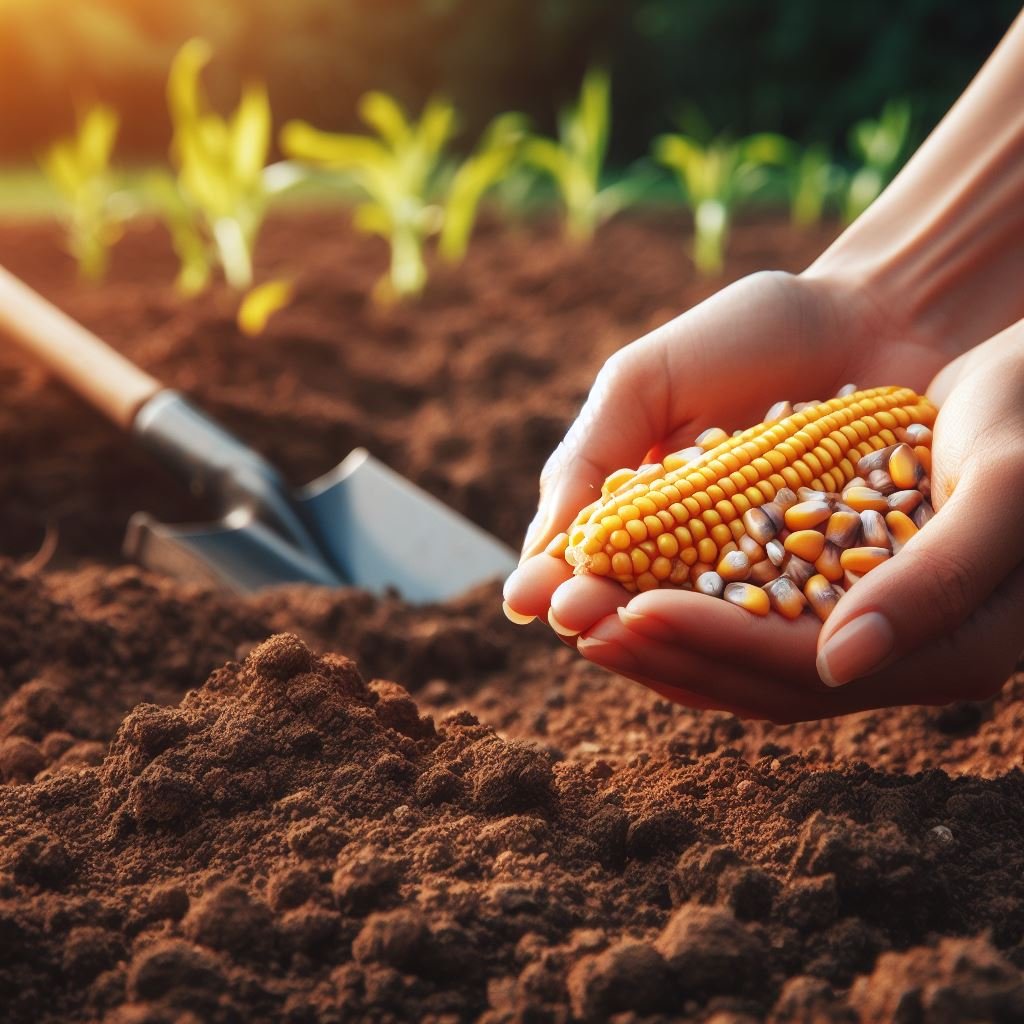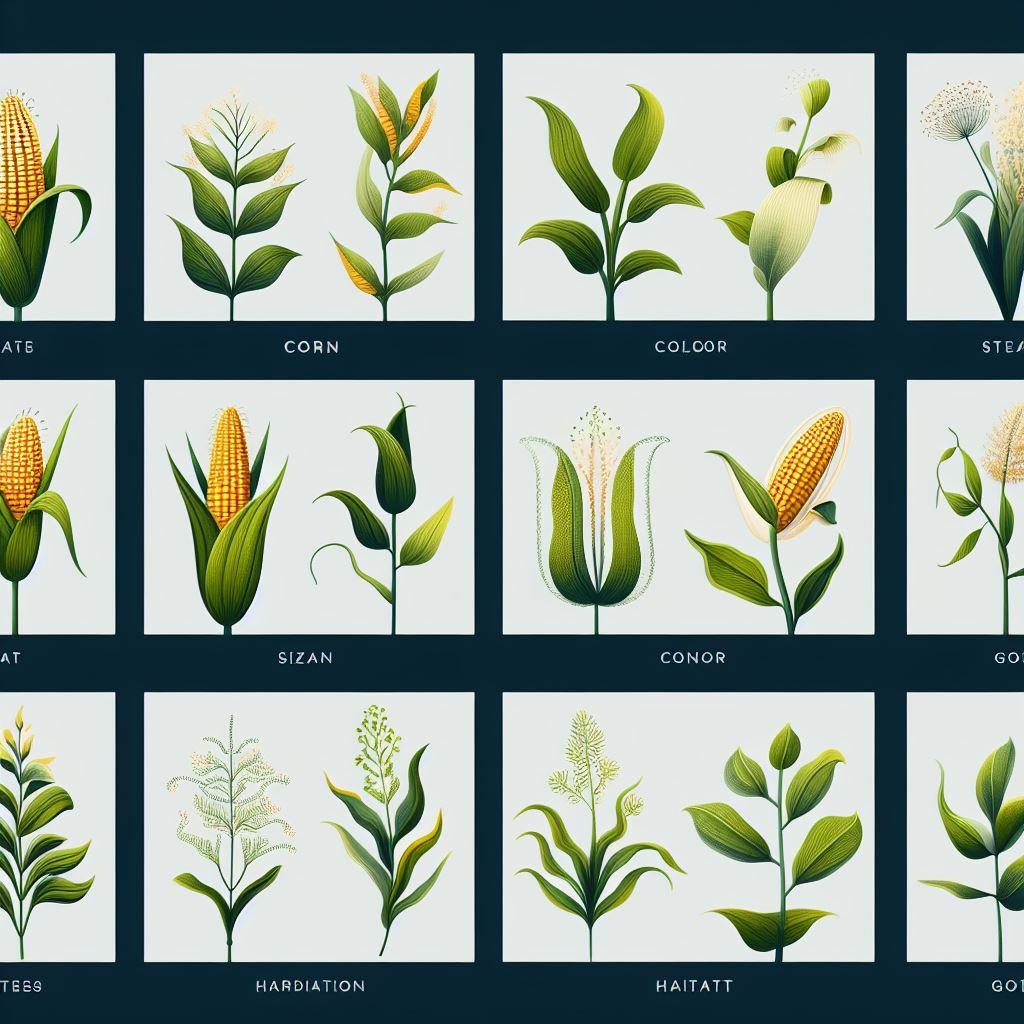How to Tell the Difference Between plants that looks similar to corn
This article is about plants that look similar to corn. Corn is a common arable crop grown for both animal and human consumption. There are multiple shops that look Alternatives to Corn and could easy wisecrack a passer- by. In this article, we will explore the differences and similarities between these common plants, and ways to tell them apart from corn. We’ll also give tips on how to identify a real Corn Plant. Let’s dive right in and explore the wonderful world of corn and its similar-looking imposters.
Introduction
Corn is a common arable crop grown for both animal and human consumption. The sweet variety, also known as sweetcorn or sugar corn, is the variety most generally grown for people to eat, and veritably popular amongst home- farmers. It is high in sugars (giving it its sweet-sounding common name), and picked when the heads are immature (the milk stage). It usually makes its way to our dinner tables in the form of corn-on-the-cob or tinned corn kernels. Field corn, also known as maize, is the variety that is grown for animal fodder and harvested when the kernels have matured and dried (dent stage). Corn and maize will be used interchangeably in this article. There are numerous Plants that look alternatives to sludge and could fluently wisecrack a passer- by. Then are some of the most common bones corn.

Corn Plant (Dracaena fragrans)
This is a popular houseplant that is native to tropical Africa. It is often grown for its attractive foliage, which resembles the leaves of a corn plant. The leaves are long and narrow and grow in a ensign pattern. The plant can grow up to 6 feet tall and is often used as a decorative accent in homes and offices.
Johnson Grass (Sorghum halfpence)
This is a tall, perennial grass that is native to the Mediterranean region. It’s frequently grown as a exploration crop for animal, but can also be set up growing wild in fields and along roadsides. The plant has long, narrow leaves that act those of a corn plant, and can grow up to 8 bases altitudinous.
Sorghum Crop (Sorghum spp.)
This is a cereal grain that’s grown for both mortal and beast consumption. It’s frequently used as a cover for corn in areas where corn isn’t readily available. The plant has long, narrow leaves that resemble those of a corn plant, and can grow up to 10 feet tall.
Giant Reed (Arundo donax L.)
This is a tall, perennial grass that is native to the Mediterranean region. It is often grown as an ornamental plant, but can also be found growing wild in wetlands and along riverbanks. The plant has long, narrow leaves that act those of a corn factory, and can grow up to 20 bases altitudinous.
Quack Grass (Elyria repens)
This is a perennial grass that is native to Europe and Asia. It’s frequently considered a weed, and can be set up growing in fields and auditoriums The plant has long, narrow leaves that resemble those of a corn plant, and can grow up to 3 feet tall.
Giant Miscanthus (Miscanthus × giganteus)
This is a tall, perennial grass that is native to Asia. It is often grown as a biofuel crop but can also be used as an ornamental plant. The plant has long, narrow leaves that resemble those of a corn plant, and can grow up to 12 feet tall.
Pearl Millet (Pennisetum glaucum)
This is a cereal grain that’s grown for both human and livestock consumption. It’s frequently used as a cover for corn in areas where corn isn’t readily available. The plant has long, narrow leaves that resemble those of a corn plant, and can grow up to 10 feet tall.
Crab Grass (Digit aria spp)
This is an annual grass that is native to North America. It is often considered a weed, and can be found growing in lawns and gardens. The plant has long, narrow leaves that resemble those of a corn plant, and can grow up to 3 feet tall.

Conclusion
This article is about plants that look similar to corn. Corn is a common arable crop grown for both animal and human consumption. There are multiple plants that look alike to corn, and could fluently wisecrack a passer- by. In this composition, we explored the differences and parallels between these common plants, and ways to tell them piecemeal from corn. We also provided tips on how to identify a real corn plant.I hope this composition has helped you understand the different plants that look alike to corn. Flash back, when in misdoubt, look for the presence of cobs faced in green leaves( the shell) and placed nearly around the altitudinous, straight stem. Varieties are usually grown in rows, and the plants are spaced about 8-12 inches apart. The leaves are long and narrow, and grow in a rosette pattern.
FAQS
There are many plants that look similar to corn, including the corn plant (Dracaena fragrans), Johnson grass (Sorghum halfpence), and sorghum crop (Sorghum spp.). identify a real corn plant
Some plants have evolved to look like corn as a form of mimicry, which can help them avoid predators or attract pollinators.
Look for the presence of cobs sheathed in green leaves (the husk) and positioned closely around the tall, straight stem. Varieties are usually grown in rows, and the plants are spaced about 8-12 inches apart.
Sorghum is a cereal grain that’s grown for both human and animals consumption. It’s frequently used as a cover for corn in areas where corn isn’t readily available. The plant has long, narrow leaves that act those of a corn plant, but the cobs are smaller and lower developed. Johnson lawn is a altitudinous, dateless lawn that’s native to the Mediterranean region. It’s frequently grown as a probe crop for animals , but can also be set up growing wild in fields and along roadsides.
The corn plant, also known as Dracaena fragrans, is a popular houseplant that is native to tropical Africa. It is often grown for its attractive foliage, which resembles the leaves of a corn plant.
Giant reed is a tall, perennial grass that is native to the Mediterranean region. It is often grown as an ornamental plant, but can also be found growing wild in wetlands and along riverbanks.
